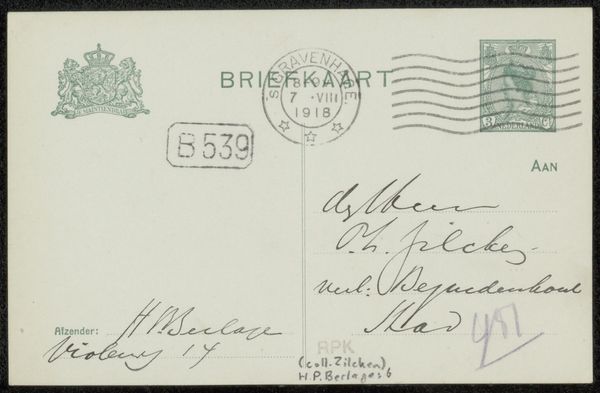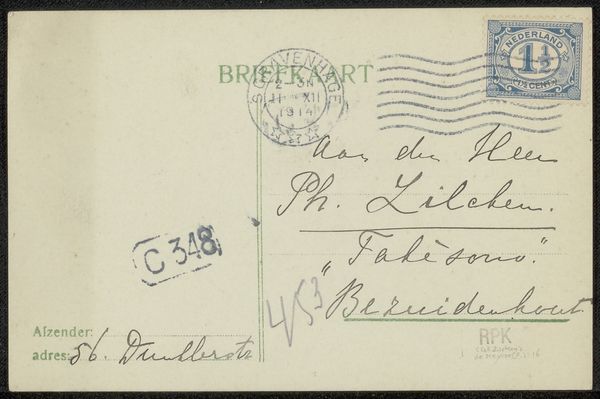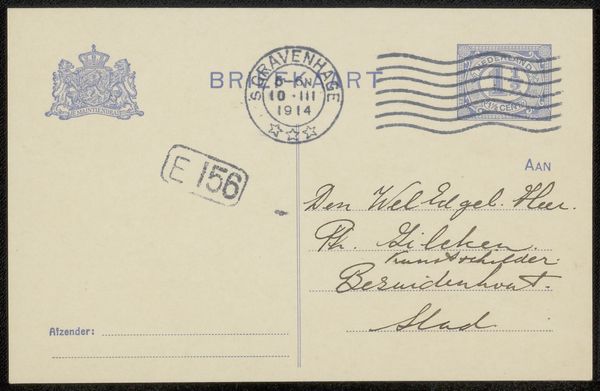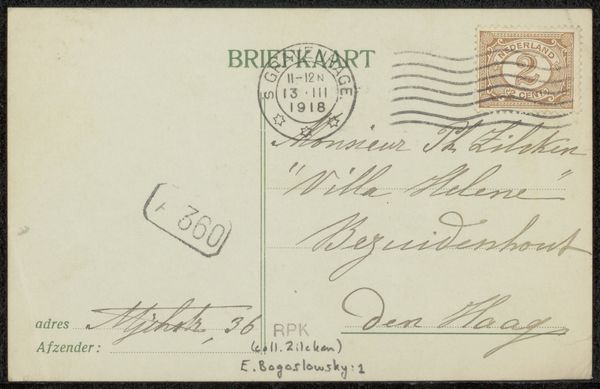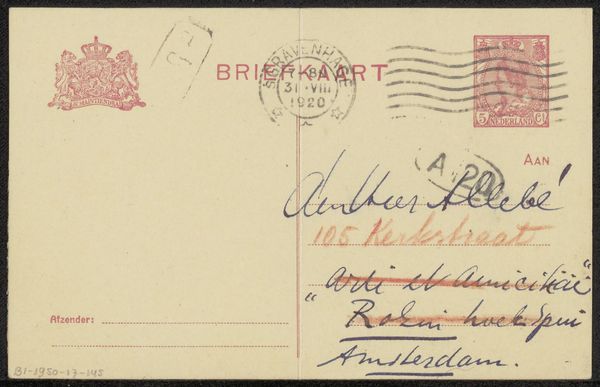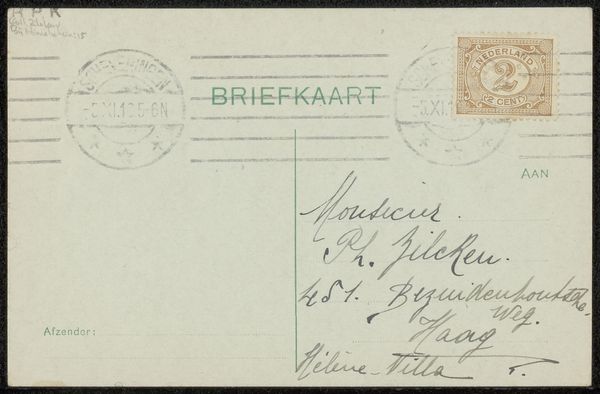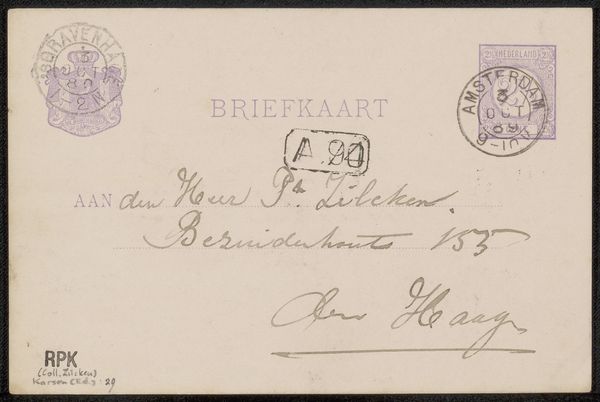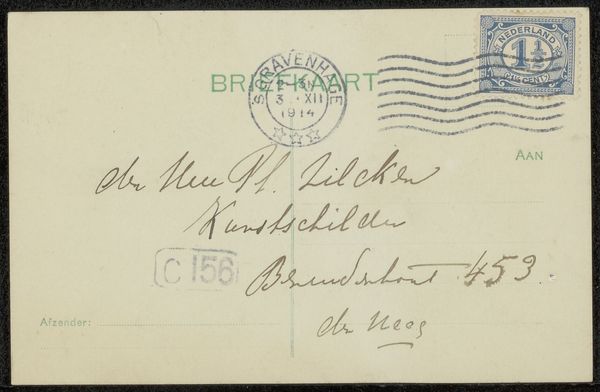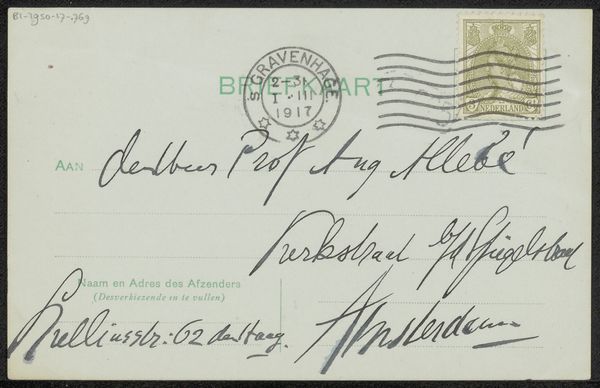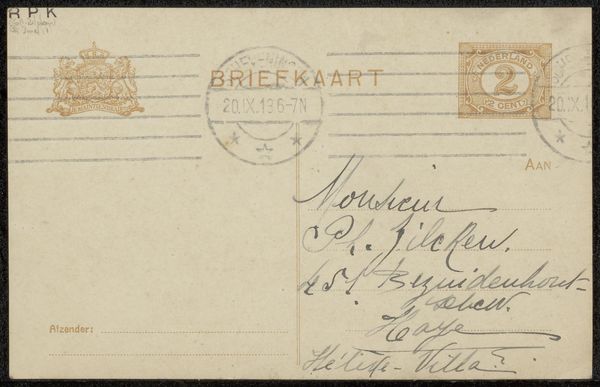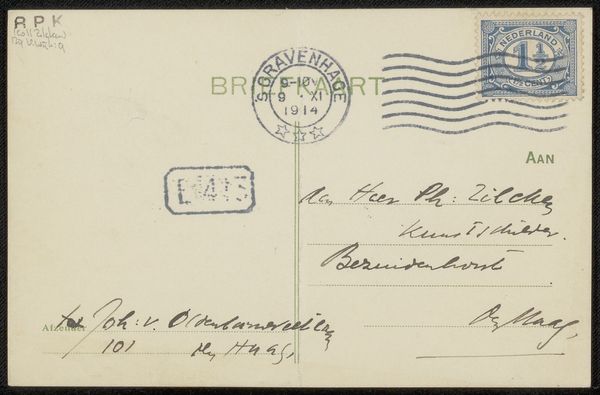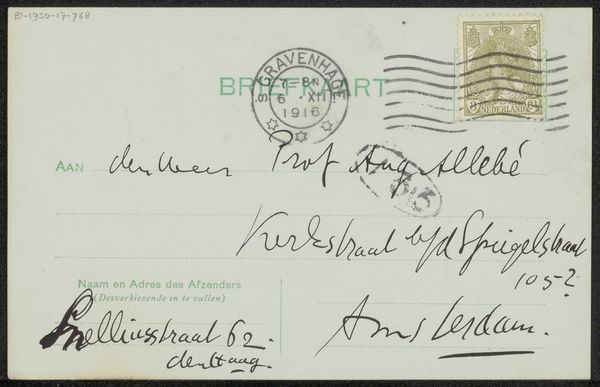
drawing, ink, pen
#
portrait
#
drawing
#
hand-lettering
#
hand drawn type
#
hand lettering
#
personal sketchbook
#
ink
#
hand-drawn typeface
#
ink drawing experimentation
#
pen-ink sketch
#
pen work
#
sketchbook drawing
#
pen
#
sketchbook art
#
calligraphy
Copyright: Rijks Museum: Open Domain
Curator: Ah, this is a fascinating piece. It's a postcard titled "Briefkaart aan August Allebé," likely sent around 1916 or 1917. Editor: It has a formal quality, with that elaborate penmanship; however, it is also immediately clear it is on the mundane media of a postcard and has mundane aspects as the postage mark, handwritten text for address and message. Curator: Precisely. Henri Wouters crafted it with pen and ink, showcasing a rather unique skill, hand-lettering and the drawn typeface. Its medium also would have been far more accessibly manufactured at the time as paper production would have been less regulated for a simple item. Editor: The lettering is the primary focus, wouldn't you say? The careful, almost calligraphic script suggests deliberate labor. It reminds us of the skill embedded in what we often take for granted. The pressure, consistency, and craft here feel charged with expression. Curator: Absolutely, it speaks to the communication methods during that era, as the choice to craft the postcard with hand-lettering also makes an indication for the role that artist practices play as they expand through all realms of a community. Moreover, a commercial approach toward type design. Editor: This postcard brings to mind questions about consumerism during World War One: what resources did an artist in Belgium have? Were such materials costly or mundane? What constraints are presented that forced particular innovations in form or the use of minimal supplies? Curator: Indeed. Furthermore, consider how postcards like this fostered public engagement with art in a decentralized manner, connecting artists to patrons directly beyond formal exhibition spaces during a tumultuous period. The ease of its transportation certainly factored into distribution. Editor: True. In fact, I was really caught by how an ephemeral format is now an important artifact. The material reminds us how essential art, the mail, the communication and interaction of these components all create historical connections of art. Curator: Exactly. We can thus investigate its social, cultural, and communicative role, and its creation of the art itself as it played a part of wartime Belgian culture. Editor: The choice of lettering itself is as communicative as the note sent, given how the use of hand lettering could indicate personal expression by incorporating its specific characteristics while in distribution, also influencing cultural reception, I appreciate the postcard for being far more than just something functional to read but a document filled with aesthetic information, skill and potential emotional touch.
Comments
No comments
Be the first to comment and join the conversation on the ultimate creative platform.
